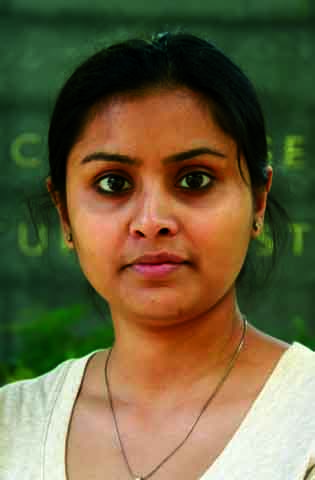‘Chhatrapati Shivaji Maharaj Katha’ at Patanjali University concludes
The narration of ‘Chhatrapati Shivaji Maharaj Katha’ being organised at Patanjali University on the ocassion of Chaitra Navratri, Ram Navami,…

Coming up trumps
For Kolkata-born Rituparna Bose, research and endeavour have paid off handsomely. The 32-year-old, who now teaches at City University, New York, has developed mathematical algorithms that give the most specific estimates of biodiversity till date. She recently identified new fossil species in Michigan, a kind of ancient marine shell, and showed that the ancient biodiversity was underestimated. Her findings showed that a greater diversity of life had, in fact, existed in the past than had been previously appreciated.
“There are around five to 30 million species of plants and animals today. One reason for such ambiguity in biodiversity numbers is that organisms have been historically classified based on visual assessment of external morphology ever since the days of Carl Linnaeus (1735). Organisms that looked different were grouped differently, and that was fine till now,” she said.
Bose&’s findings demonstrated the shortcomings of such visual classification and highlighted the need for classification based on objective quantitative algorithms. Part of her research was presented at the North American Paleontological Convention. This is especially significant as the United Nations has declared 2011-2020 the Decade of Biodiversity and she has subsequently been elected a Fellow of the Paleontological Society of India and the prestigious Geological Society of London.
Her findings were recently reported in Historical Biology and Paläontologische Zeitschrift, both journals on fossil science. Bose is also the editor of Acta Palaeontogica Sinica, the flagship journal of the Chinese Academy of Sciences, China&’s highest academic institution and provides scientific leadership on vital global issues. She also serves on the editorial board of a few famous scholarly journals, including the Geological Journal and Bulletins of American Paleontology (Paleontological Research Institute, Cornell University).
One of the exciting findings of her work, along with David Polly, was that scientists may have misestimated the number of species that existed in prehistoric times.
“My research has been published in several acclaimed palaeontology journals, including Palaios. My dissertation has also been selected for the best theses award by prominent publisher Springer and is being published in their ‘best of the best theses’ series,” she said.
An alumnus of both Calcutta University and Jadavpur University, she is now an adjunct faculty at the Department of Earth and Atmospheric Sciences, City University, New York, and married to Arnab De, a microbiologist from Columbia University, who has also been her co- worker. De, too, is from Kolkata and had graduated from Presidency College.
India blooms news service
Advertisement
Advertisement